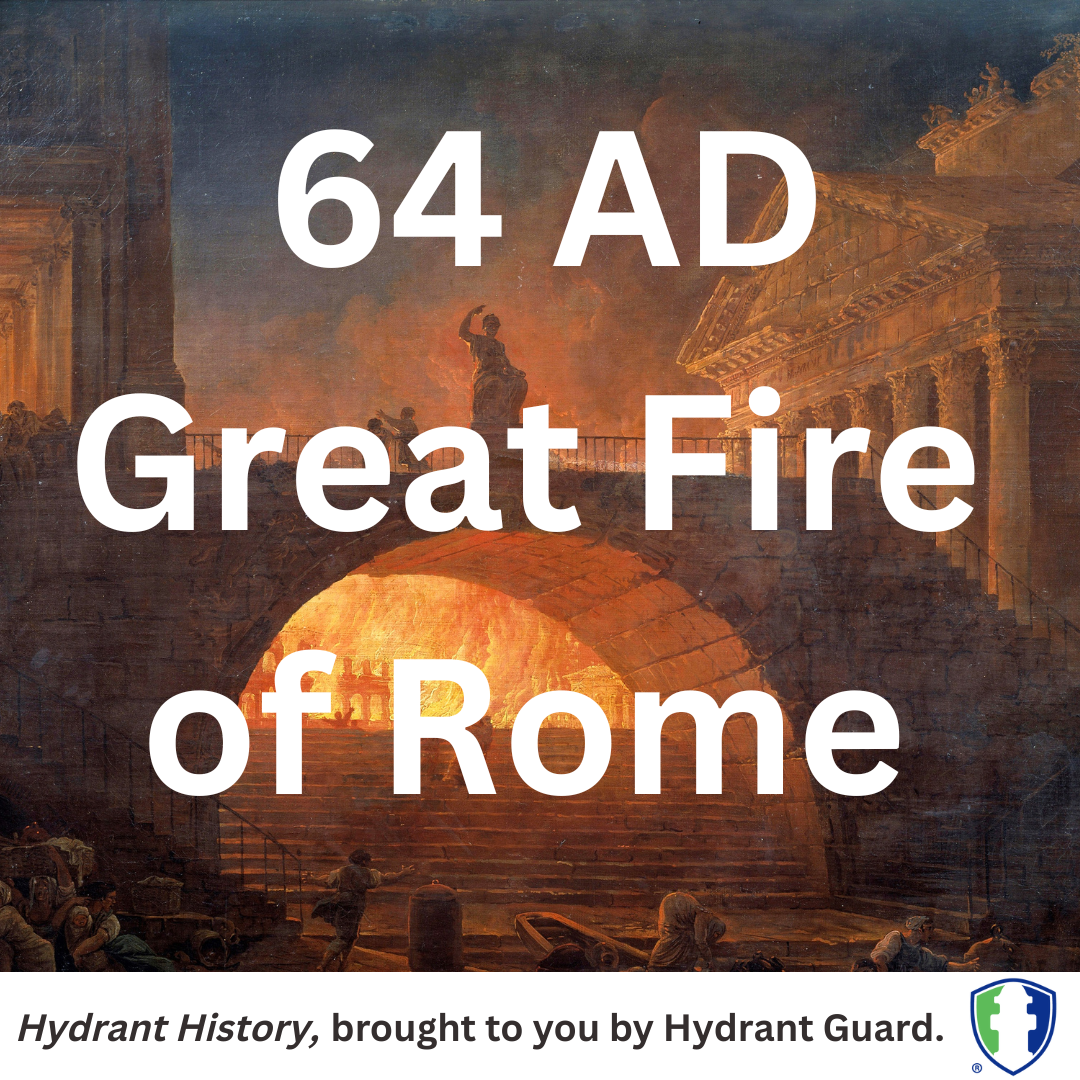Hydrant History: The Great Fire of Rome, 64 AD
A Glimpse into Firefighting Tactics in the Roman Empire
One of the first conflagrations of recorded history gives an example of how dramatically an urban landscape can change after demolition by fire. Like the California of today, Rome had been suffering years of drought. The Great Fire of 64 AD burned down two thirds of the city and provided a blank slate for reconstruction. Fortunately for posterity, planners rebuilt the city with an improved, fire-safer urban design
At the time of the Great Fire, Rome had been deploying active fire brigades for decades. Augustus Caesar had founded the Vigiles Urbani around the turn of the millennium to patrol the Capital for unsupervised fires. The typical Vigiles firefighting kit was more like a cache of weapons: buckets, hooks, picks, axes and even catapults. Horses pulled wagons carrying double-action pumps submerged in small, towable cisterns.
Although some of the Vigiles specialized in maintaining a place-perfect memory of the city’s water sources, pumps were primitive and harnessing water was a serious mechanical challenge. As a result, most firefighting was ruthlessly destructive for any unfortunate property owner. The goal was to stem the spread of fire, and private property was subordinate to civic safety. A typical firefight involved tearing down buildings or barraging them with arrows and stones to create firebreaks. Draping flames in vast blankets, doused in a sort of elementary flame retardant, was also a common maneuver.
The city that emerged after the Great Fire looked purposeful and awed visitors: large avenues, stone masses of buildings, public fountains, baths, and urban reservoirs. Neighborhoods were rebuilt with firebreaks between structures. The aqueducts and the clay piping that flushed Rome with water were given larger above-ground networks. The Romans didn’t yet have dedicated fire hydrants, but their advances in infrastructure laid the groundwork for more modern firefighting strategies.
Another city’s famous fire disaster led to even more inventions that still define modern firefighting. In our next post in the “Hydrant History” series, we’ll jump into the Great Fire of London.


